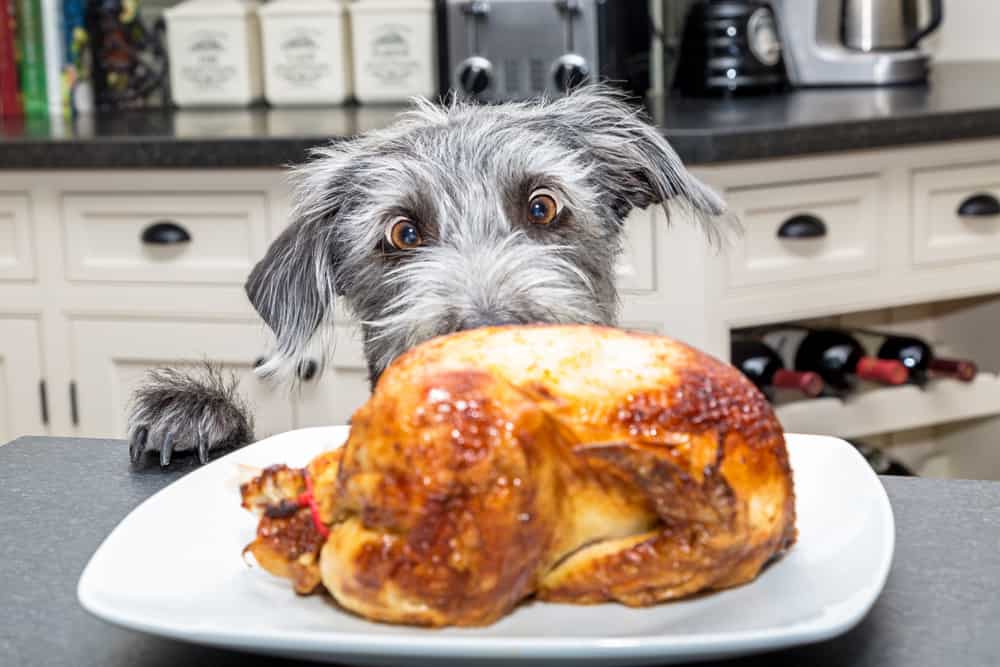Measuring your dog's neck for a collar is an important step in ensuring the right fit and comfort for your furry friend. Ill-fitting collars can cause discomfort, restrict movement, or even pose a safety risk. Properly measuring your dog's neck will help you choose the right collar size and style that suits your dog's needs.
If your dog's neck size falls between two standard sizes, it is advisable to choose the larger size for a more comfortable fit. You can always adjust the collar for a secure fit using the available settings.
When selecting a dog collar, there are additional considerations to keep in mind. Firstly, consider whether an adjustable or fixed-size collar is more suitable for your dog's needs. Adjustable collars allow for flexibility as your dog grows or if you need to make slight adjustments for fit. Secondly, consider the material and durability of the collar to ensure it can withstand your dog's activities and lifestyle. Lastly, take into account the type of closure or buckle on the collar, ensuring it is secure and easy to use.
By following these guidelines and considering these factors, you can confidently measure your dog's neck for a collar and choose the most appropriate option for your furry companion.
Why is it Important to Measure a Dog's Neck for a Collar?
It is important to measure a dog's neck for a collar in order to ensure a proper fit and maintain the safety and comfort of the dog. By measuring the dog's neck accurately, you can choose the right size collar that prevents any discomfort, breathing difficulties, or injuries caused by an ill-fitting collar. Safety is a key consideration when it comes to collar size.
A collar that is too tight can cause discomfort and restrict the dog's breathing, while a collar that is too loose may slip off or allow the dog to escape. To avoid these issues, measuring the dog's neck is crucial as it allows you to select a collar size that provides a secure fit without causing any harm. Comfort is another important factor. Dogs should be able to move their necks freely without any restrictions from the collar. If a collar is too tight, it can lead to coughing or irritation, whereas a collar that is too loose may cause the dog to chew or scratch at it.
By measuring the neck, you can ensure a comfortable fit that allows the dog to move naturally. Identification is also a significant aspect to consider. Dog collars often have identification tags attached, which contain crucial information such as the owner's contact details. A properly fitting collar ensures that the identification tags are easily visible and accessible, making it easier for others to identify and return a lost dog. Additionally, for training purposes, precise sizing is required for training collars like martingale or prong collars.
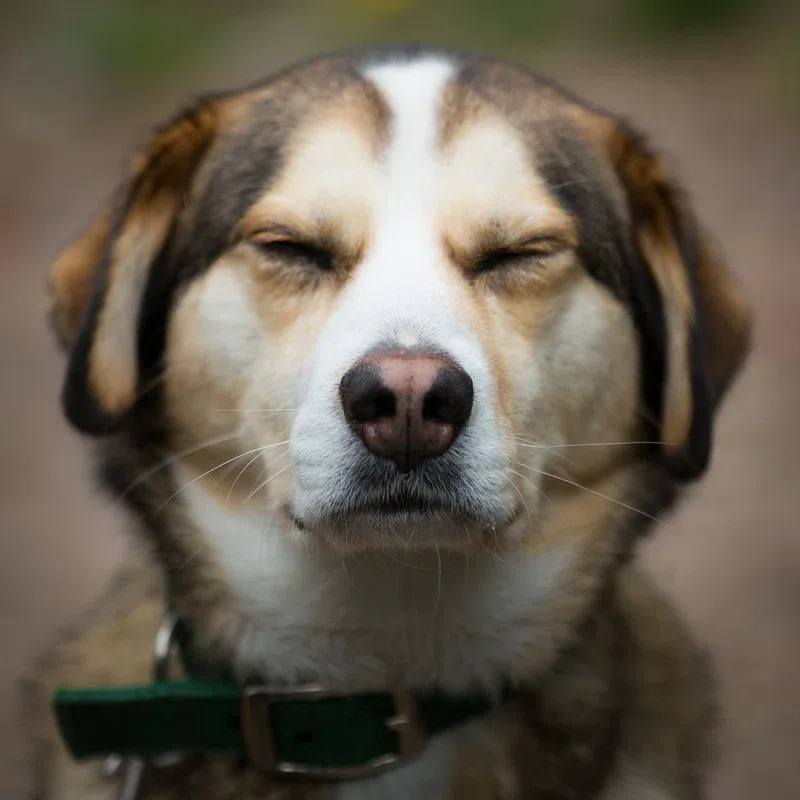
What Tools Do You Need to Measure a Dog's Neck?
When it comes to measuring a dog's neck for a collar, having the right tools is essential. In this section, we'll explore the different tools you can use to get accurate measurements. From soft tape measures to tailor's measuring tape, rigid rulers to even a simple piece of string, each tool brings its own advantages. So, let's dig in and discover which tool will be your best companion in finding the perfect fit for your furry friend's collar.
Soft measure tape
When measuring a dog's neck for a collar, using a soft measure tape can be very helpful. Here are some important details to consider:
- Soft and flexible: A soft measure tape is made of a pliable material that can easily bend and conform to the shape of a dog's neck. This ensures a more accurate measurement.
- Easy to use: With a soft measure tape, you can simply wrap it around the dog's neck and read the measurement. The tape is usually marked with clear increments to make it easier to determine the size.
- Comfortable for the dog: Since a soft measure tape is gentle on the dog's neck, it creates less discomfort or irritation during the measurement process.
- Accurate measurement: The flexibility of the tape allows it to contour to the neck, providing a precise measurement that helps in selecting the right collar size for the dog.
- Versatile: Soft measure tapes come in different lengths, ensuring that you can find one suitable for measuring dogs of all sizes, from small breeds to large breeds.
- Durable and washable: Soft measure tapes are often made from durable materials that can withstand frequent use. They can also be easily cleaned or wiped down if they get dirty.
By using a soft measure tape, you can ensure that you get an accurate measurement of your dog's neck, allowing you to choose the right collar size for their comfort and safety.
Tape measure
When it comes to measuring a dog's neck for a collar, using a tape measure is a reliable and easy method. Here are some important considerations:
- Start by ensuring your dog is calm and comfortable. This will make the measurement process easier and more accurate.
- Get a flexible tape measure, preferably one specifically designed for measuring dogs. This will ensure a more precise measurement.
- Before taking the measurement, make sure the tape measure is not stretched or twisted.
- Gently wrap the tape measure around the base of your dog's neck, just above the shoulders. Make sure it is snug but not too tight.
- Take note of the measurement in inches or centimeters.
Once you have the measurement, you can determine the appropriate collar size for your dog. It's important to choose a collar that fits properly for your dog's safety and comfort.
Remember these suggestions while using a tape measure:
- Always measure the neck size before purchasing a new collar to ensure a proper fit.
- Ensure the collar has an adjustable buckle or closure to accommodate any slight changes in your dog's neck size.
- Consider the material and durability of the collar, especially if your dog is active or prone to chewing.
- Choose a collar with a suitable closure or buckle that is easy to use and secure, such as a quick-release buckle or slip-over-the-head design.
By following these guidelines and using a tape measure to measure your dog's neck, you can choose the right collar size for your furry friend.

Tailors measuring tape
The tailor's measuring tape is an essential and versatile tool when measuring a dog's neck for a collar. Here are some key points to consider when using a tailors measuring tape for this purpose:
- Accurate measurement: The tailor's measuring tape is specifically designed to provide precise and reliable measurements, ensuring the perfect fit for your dog's collar.
- Flexible and easy to use: The tape is highly flexible and effortlessly wraps around your dog's neck, offering a comfortable and secure fit. Additionally, it is user-friendly, allowing for easy readability of the measurements on the tape.
- Versatility: The tailor's measuring tape caters to dogs of all sizes, ranging from small breeds to large breeds.
- Durable and long-lasting: Constructed from premium quality materials, the tape is built to withstand wear and tear, guaranteeing its longevity.
- Convenient storage: The tape boasts a compact design, enabling effortless storage when not in use. This ensures the tape is always readily available for measuring your dog's neck.
- Reliable and accurate: The tailor's measuring tape consistently delivers reliable and accurate measurements, eliminating any guesswork and enabling you to find the perfect collar size for your dog.
Using a tailor's measuring tape is an efficient and effective way to ensure that your dog's collar fits properly and comfortably. By following the steps in the measurement guide and utilizing the tailor's measuring tape, you can confidently determine the ideal collar size for your furry friend. Happy measuring!
Rigid ruler
To accurately measure a dog's neck for a collar, you can use a rigid ruler. Here is a table to provide the steps involved in using a rigid ruler for measuring a dog's neck:
Remember, it's important to measure the dog's neck accurately to ensure a proper fit for the collar. A collar that is too tight can be uncomfortable or restrictive, while a collar that is too loose may slip off. By using a rigid ruler and following these steps, you can determine the correct size for your dog's collar and provide a comfortable and safe fit.
Piece of string
When measuring a dog's neck for a collar, a piece of string can be a handy tool to use. This method is simple, cost-effective, and can provide accurate results.
To measure a dog's neck using a piece of string, follow these steps:
- First, prepare your dog by ensuring they are calm and relaxed.
- Get a piece of string that is long enough to wrap around your dog's neck comfortably. It should be about the length of the collar you plan to use.
- Wrap the string around the base of your dog's neck, just above the shoulders, where the collar will sit.
- Make sure the string is snug but not too tight. You should be able to fit two fingers between the string and your dog's neck for a proper fit.
- Once the piece of string is in place, mark the point where the string overlaps with a small pen mark or by tying a knot.
- Remove the string from your dog's neck and lay it flat on a ruler or tape measure to determine the length.
- Read the measurement and use this as the basis for choosing the right collar size for your dog.
By using a piece of string, you can easily measure your dog's neck and ensure that the collar you choose will be a perfect fit. Remember to consider the specific needs of your dog, such as adjustable vs. fixed size collars and the type of closure or buckle, to enhance their comfort and safety.
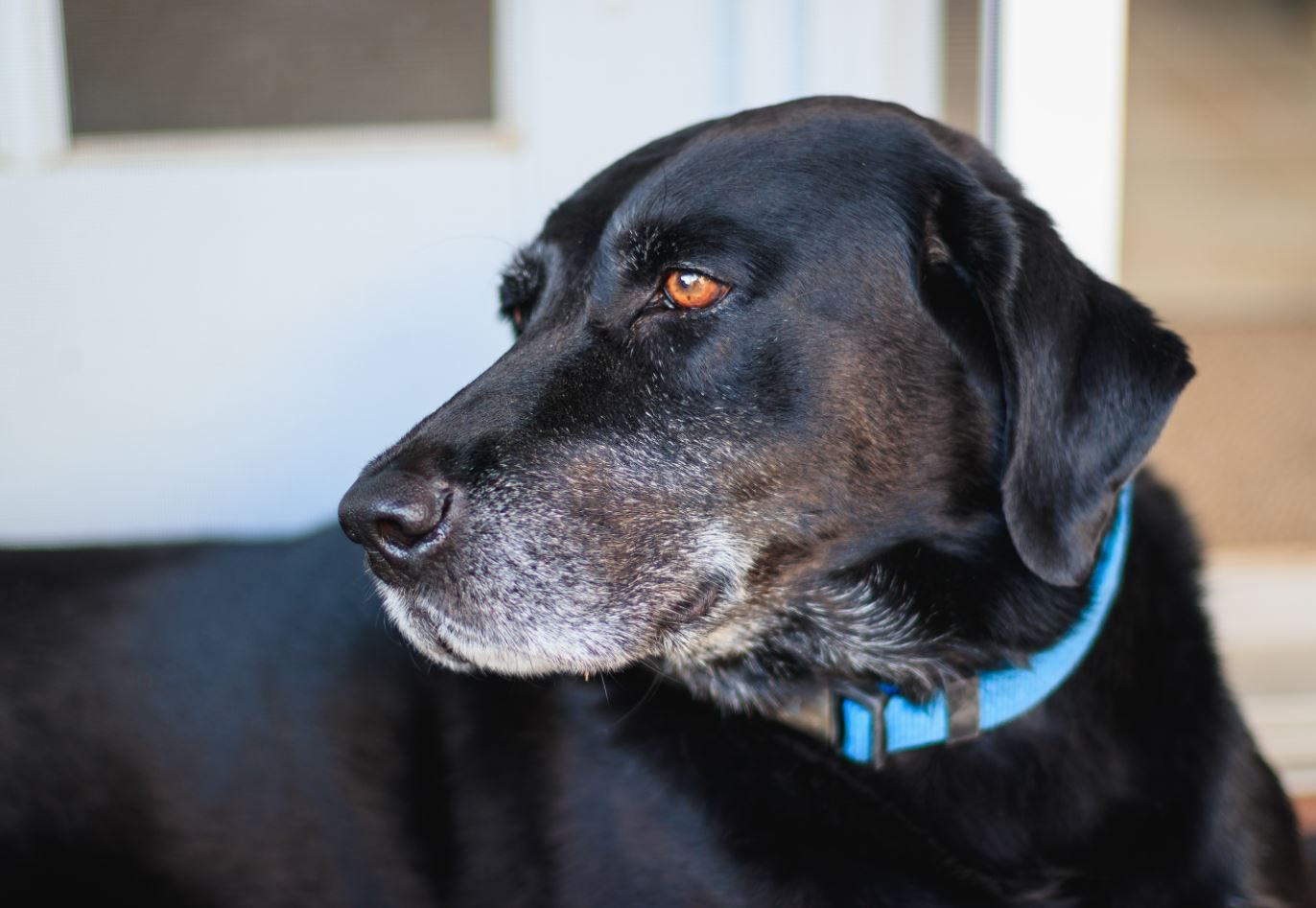
Step-by-Step Guide on How to Measure a Dog's Neck for a Collar
Discover the foolproof method to accurately measure your dog's neck for the perfect collar fit!
Step 1: Prepare Your Dog
- Before measuring your dog's neck for a collar, ensure that your dog is calm and relaxed. It's best to take these measurements when your dog is in a quiet and comfortable environment.
- Gently stroke your dog's neck and speak softly to help them feel at ease during the measuring process.
- Make sure that the fur around your dog's neck is dry and free from any tangles or mats. This will ensure accurate measurements.
- If your dog has long or thick fur, consider parting the fur to expose the skin. This will help you get closer to the actual size of their neck.
- If your dog is wearing any existing collars or accessories, remove them before taking measurements to avoid any interference.
- Stand or position your dog in an upright and natural posture. This will help you measure their neck circumference accurately.
- Use a soft measuring tape, tape measure, or tailor measuring tape to wrap around the base of your dog's neck. Make sure to position the tape just below the jawline and snugly against the neck, but not too tight.
- Hold one end of the measuring tape in place and read the measurement where the end of the tape meets the rest of the tape. This measurement will determine the size of the collar your dog needs.
- Double-check the measurement to ensure accuracy. It's always a good idea to take multiple measurements just to be sure.
- Record the measurement in either inches or centimeters, depending on the collar sizing system you will be using.
Remember to be patient and gentle with your dog throughout the process. Building trust and creating positive experiences will make measuring their neck for a collar a stress-free activity.
Fact: Dogs' neck sizes can vary greatly depending on their breed, age, and overall physique. It's essential to measure their neck accurately to ensure a comfortable and secure fit for their collar.
Step 2: Get the Measurement Tools Ready
When it comes to measuring your dog's neck for a collar, it's important to have the right tools ready. Here is a step-by-step guide.
- Soft measure tape: This is a flexible measuring tape that can easily wrap around your dog's neck. Make sure you have a soft measure tape on hand before proceeding with the measurement.
- Tape measure: Another option is to use a regular tape measure to measure your dog's neck. This tool is more rigid than a soft measure tape, but it can still get the job done.
- Tailor's measuring tape: If you have a tailor's measuring tape, you can also use it to measure your dog's neck. This type of measuring tape is designed for precise measurements and can be a great tool to have.
- Rigid ruler: In the absence of a measuring tape, a rigid ruler can be used to measure your dog's neck. While it may not be as flexible as a measuring tape, it can still provide accurate measurements.
- Piece of string: If you don't have any measuring tools available, a simple piece of string can be used. Wrap the string around your dog's neck and mark where it meets. Then, measure the length of the string with a ruler or any other measuring device.
It's important to note that having the right measurement tools ready will ensure accurate results when measuring your dog's neck for a collar.
Step 3: Measure the Dog's Neck
- Place the measuring tool around the dog's neck, ensuring it is snug but not tight.
- Make sure the measuring tool is sitting at the base of the neck, where the collar would normally sit.
- Read the measurement from the measuring tool.
It is important to consider additional factors when choosing a dog collar:
- Adjustable vs. Fixed Size Collars: Decide if you prefer a collar with adjustable sizing or a fixed size.
- Material and Durability: Consider the material of the collar and its durability based on your dog's activity level and behavior.
- Type of Closure or Buckle: Choose between a quick-release buckle or a slip over the dog's head collar based on convenience and ease of use.
A proper collar fit is essential for your dog's safety and comfortable movement:
- Ensure there is enough room between the pet's neck and the collar to prevent choking or discomfort.
- The collar should fit well without causing coughing or restricting breathing.
- Select a collar size suitable for your dog, whether it is a puppy or a fully grown dog.
Remember to measure your dog's neck accurately and consider their individual needs when choosing a collar.
Step 4: Determine the Collar Size
When determining the collar size for your dog, follow these steps:
- Measure the dog's neck circumference using a soft measure tape, tape measure, or tailors measuring tape.
- Wrap the measuring tool around the dog's neck, ensuring a snug but not tight fit.
- Note down the measurement in inches or centimeters.
- Refer to the sizing chart provided by the collar manufacturer to determine the appropriate collar size based on the neck measurement.
- If your dog's neck size falls between two standard sizes, choose the larger size for comfort and adjustability.
Additional considerations when choosing a dog collar include:
- Deciding between an adjustable collar or fixed size collar based on your dog's growth and comfort needs.
- Evaluating the material and durability of the collar for long-lasting use.
- Consider the type of closure or buckle, such as a quick-release buckle or slip over the dog's head, based on ease of use and security.
To ensure your dog's safety and comfortable movement, the collar should have:
- Adequate room between the pet's neck and the collar to prevent discomfort.
- A proper fit without causing coughing or restricting breathing.
- An appropriate fitting for a puppy or fully grown dog, considering growth and weight changes.
By following these steps and considering these factors, you can determine the suitable collar size for your dog's needs.
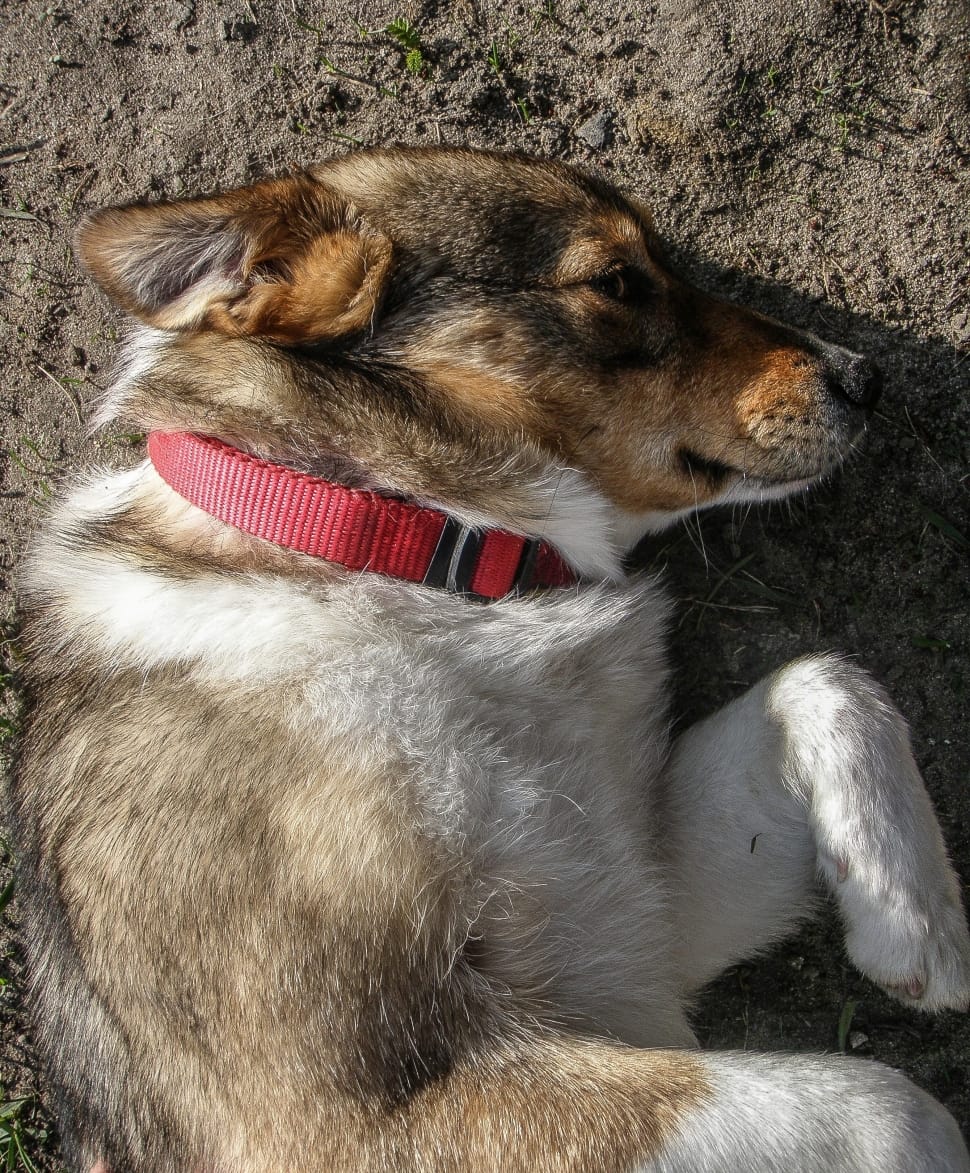
What to Do if Your Dog's Neck Size Falls Between Two Standard Sizes?
If your dog's neck size falls between two standard sizes, here are some steps you can take to ensure a proper fit:
- Measure accurately: Use a soft measure tape, tape measure, or tailors measuring tape to measure your dog's neck. Make sure to measure at the widest point of the neck and add an extra inch for comfort.
- Choose an adjustable collar: Opt for an adjustable collar that allows you to customize the fit. This way, you can easily adjust the collar to accommodate your dog's neck size.
- Test the fit: Put the collar on your dog and check for proper fit. There should be enough room to fit two fingers between the collar and your dog's neck. The collar should be snug enough to stay in place but not too tight to restrict breathing or cause discomfort.
- Consider additional features: Look for collars with sizing holes or buckles that offer intermediate sizes. These options can help you find a better fit for your dog's neck size.
- Consult a professional: If you're unsure about the right collar size or if your dog falls between two standard sizes, it's always a good idea to consult with a professional, such as a veterinarian or a dog trainer, who can provide guidance based on your dog's specific needs.
By following these steps, you can ensure that your dog's collar fits comfortably and securely, providing them with both safety and freedom of movement.
Additional Considerations When Choosing a Dog Collar
When choosing a dog collar, there are additional considerations to keep in mind to ensure the best fit and comfort for your furry friend.
Adjustable vs. Fixed Size Collars
When it comes to choosing a dog collar, one important consideration is whether to opt for an adjustable or fixed-size collar. Here are some factors to consider:
- Flexibility: Adjustable collars provide the flexibility to change the size as your dog grows or if they gain or lose weight. This can be particularly useful for puppies who are still growing. Fixed-size collars, on the other hand, are set at a specific size and cannot be adjusted.
- Comfort: Adjustable collars allow you to find the perfect fit for your dog's neck, ensuring their comfort. You can easily loosen or tighten the collar as needed. Fixed-size collars may not provide the same level of customized comfort.
- Convenience: Adjustable collars offer convenience when it comes to putting the collar on and taking it off your dog. You can easily adjust the size to slide the collar over their head or use a quick-release buckle. Fixed-size collars may require you to slip it over your dog's head.
- Durability: Both adjustable and fixed-size collars can be made from durable materials. The longevity of the collar depends on the quality of the materials and construction. Consider the durability of the collar based on your dog's activity levels and behavior.
Ultimately, the choice between adjustable and fixed-size collars depends on your dog's specific needs and your preferences. If you have a growing puppy or want more flexibility in sizing, an adjustable collar may be the better option. On the other hand, if you prefer a collar that stays in place without the need for adjustments, a fixed-size collar may be suitable.
Material and Durability
The material and durability of a dog collar are crucial factors to consider when selecting the appropriate collar for your furry companion. In the table provided below, you will find an overview of various collar materials and their respective durability:
| Material | Durability |
| Nylon | Durable and long-lasting |
| Leather | Highly durable, but proper care and maintenance are required |
| Chain | Very durable, although it may cause discomfort for some dogs |
| Canvas | Durable, but it may not withstand heavy pulling or rough play |
| Rubber | Durable and resistant to weather conditions |
Choosing a collar material that suits your dog's needs and lifestyle is crucial. Nylon collars are a popular choice due to their durability and versatility. They are also easy to clean and come in various colors and styles. While leather collars are highly durable and stylish, they require more maintenance to ensure longevity. Chain collars are known for their durability, but some dogs may find them uncomfortable. Canvas and rubber collars provide both durability and weather resistance, making them ideal for outdoor adventures.
When evaluating collar durability, it is essential to assess the quality of the materials used and the collar's construction. Look for reinforced stitching and sturdy hardware, such as metal buckles and D-rings, which can withstand everyday wear and tear.
Always consider your dog's specific needs and preferences when selecting the collar's material and durability. By choosing a collar that aligns with their lifestyle, you can ensure their safety, comfort, and style.
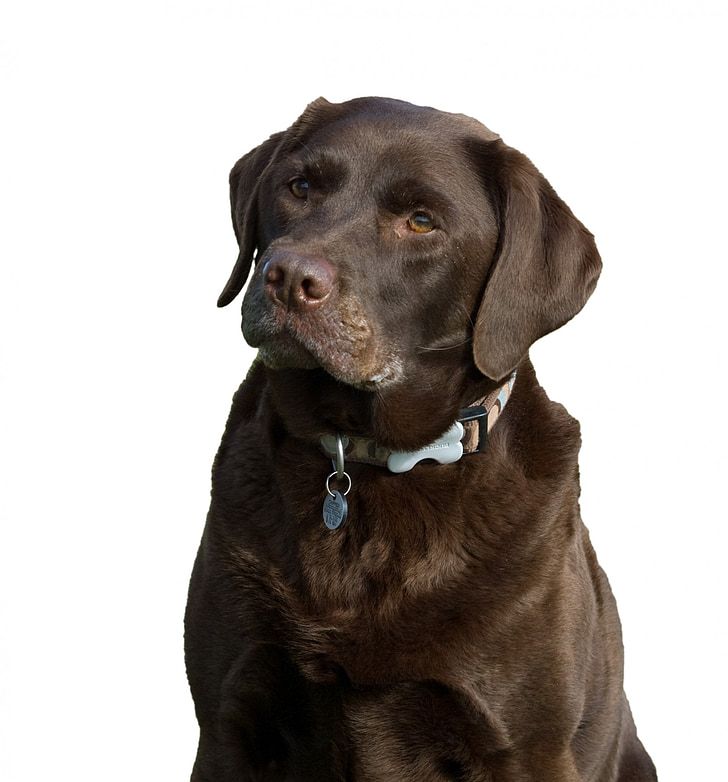
Type of Closure or Buckle
When choosing a dog collar, one important consideration is the Type of Closure or Buckle that the collar has. This plays a role in how secure and easy to use the collar is for both the owner and the dog. Here are different types of closures or buckles that you can choose from:
- Quick-release buckle: This Type of Closure or Buckle allows for easy and quick removal of the collar. It typically has a mechanism that can be easily pressed to release the buckle. Quick-release buckles are convenient for everyday use and can be especially useful in emergency situations.
- Slip over the dog's head: Some collars are designed to be slipped over the dog's head, without any buckles or closures. This Type of Closure or Buckle is simple and secure, as it requires the collar to fit snugly over the dog's head. It may be more difficult to put on or take off compared to collars with buckles.
When choosing the Type of Closure or Buckle for your dog's collar, consider your dog's behavior and comfort. Some dogs may be more comfortable with a particular type of closure, while others may require the security of a quick-release buckle. Ultimately, the choice depends on what works best for you and your dog.
Using a Piece of String and Ruler
To measure a dog's neck, you can use a piece of string and a ruler. Just follow these steps:
- Start by getting your dog ready. Make sure your dog is calm and comfortable before you begin measuring its neck.
- Prepare the measurement tools, which consist of a piece of string and a ruler. It is important to have a ruler that is long enough to accurately measure the string.
- Wrap the string around the base of the dog's neck, where a collar would typically sit. Ensure that the string is snug but not too tight. Hold the ends of the string firmly in place.
- Once you have obtained the measurement, carefully remove the string from your dog's neck and lay it flat on a surface.
- Use the ruler to measure the length of the string in either inches or centimeters. Make sure the ruler is placed straight and accurately against the string.
- Based on the measurement, determine the appropriate collar size. It is recommended to choose an adjustable collar for a proper fit. If the measurement falls between two standard sizes, opt for the larger size for added comfort.
- Consider other factors when selecting a dog collar, such as whether you prefer an adjustable or fixed-size collar, the material and durability of the collar, and the type of closure or buckle (e.g., quick release or slip) you prefer.
- Ensure that the collar fits your dog correctly for their safety and comfort. There should be enough space between the pet's neck and the collar to fit two fingers easily. The collar should be secure without causing coughing or restricting breathing. For puppies, make sure the collar can be adjusted as they grow.
Remember, using a piece of string and a ruler is a straightforward and effective way to measure your dog's neck for a collar. This method guarantees accurate measurements, ensuring a comfortable and secure fit for your beloved furry friend.
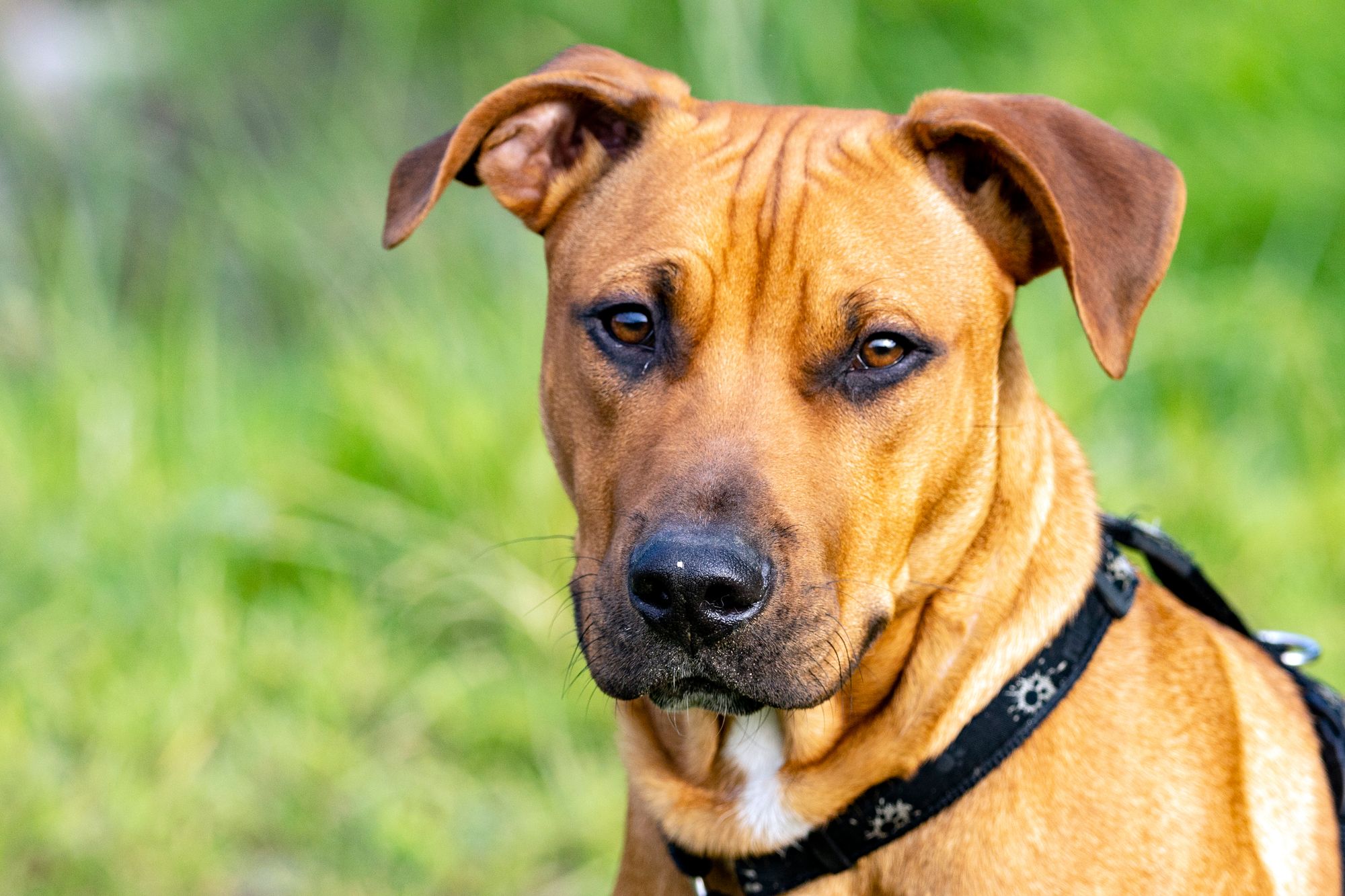
Material and Care FAQs
Here are some frequently asked questions regarding the material and care of dog collars:
- What materials are commonly used for dog collars?
Dog collars are often made from materials such as nylon, leather, or polyester. Nylon collars are durable and easy to clean, while leather collars are stylish and long-lasting.
- How do I clean my dog's collar?
The cleaning instructions for each collar may vary, but most can be cleaned by handwashing with mild soap and water. Avoid using harsh chemicals or abrasive cleaners that can damage the material.
- Can I machine wash my dog's collar?
It depends on the specific collar and its material. Some collars, like nylon or polyester ones, are machine washable on a gentle cycle. It's always best to check the care instructions provided by the manufacturer.
- How often should I replace my dog's collar?
It is recommended to regularly check your dog's collar for signs of wear and tear. If the collar becomes frayed, faded, or damaged, it's time to replace it to ensure your dog's safety.
- Are there any special considerations for waterproof collars? Waterproof collars are designed to withstand water exposure, but they still require care. After your dog has been in the water, rinse the collar with fresh water and allow it to dry before putting it back on your dog.
Pro-tip: When choosing a dog collar, consider both the material and care instructions to ensure that it will be comfortable for your dog and easy to maintain over time.
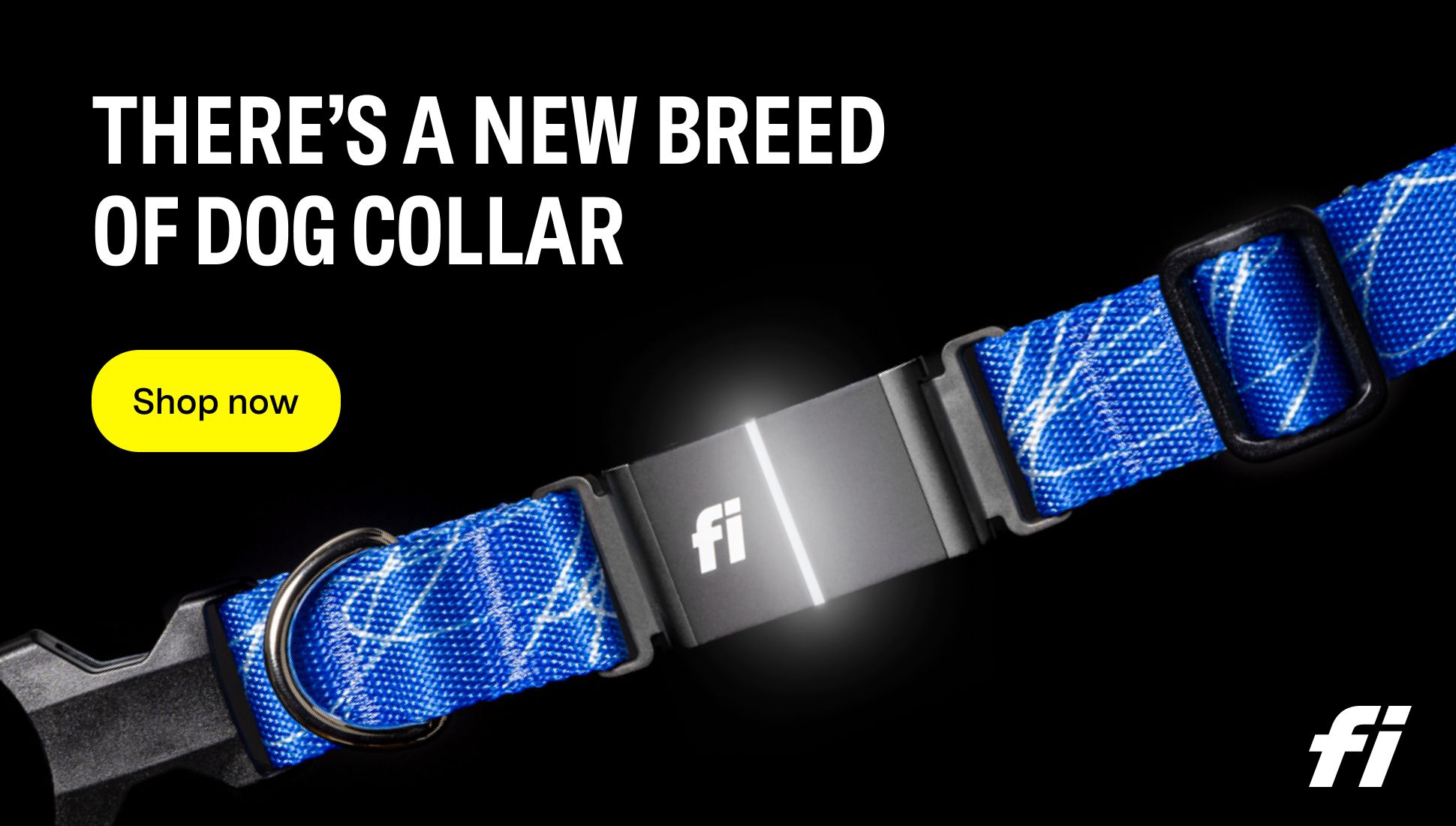
Frequently Asked Questions
How do I accurately measure my dog's neck size for a collar?
To accurately measure your dog's neck size for a collar, you can use either a cloth tape measure or a phone charger cable. With a cloth tape measure, measure the center of your dog's neck a few inches down from their head. If using a phone charger cable, wrap it gently around the thickest area of your dog's neck, then mark the spot where it meets the charger end and use a tape measure to get the measurement. Remember to pull the cable snug enough to fit two fingers between it and your dog's neck.
What is the proper collar size for my dog?
The proper collar size for your dog depends on their neck measurement and the type of collar you choose. For adjustable collars with quick-release buckles, your dog's measured neck size must fit within the collar's adjustable length range. For collars with a metal buckle, round down the measurement of your dog's neck to the nearest even-sized number. Metal buckle dog collars typically have 4 sizing holes, allowing for an adjustable fit from the smallest size to a wider range.
Why is getting the right collar size important for my dog's safety?
Getting the right collar size for your dog is important for their health and safety. If the collar is too big, it can easily slip over the dog's head, leading to potential choking hazards. On the other hand, a collar that is too small can restrict breathing and cause discomfort. Ensuring the collar fits properly allows for easy movement, while still keeping your dog secure and comfortable.
What collar size should I choose for my puppy?
For puppies, it is best to choose a collar with a large adjustable size range. Puppies grow quickly, so having a collar that can be easily adjusted as they grow ensures a proper fit throughout their development. This eliminates the need to constantly purchase a whole new collar size every few weeks.
Can I use my dog's current collar to determine their new size?
Using your dog's current collar as a starting point can be helpful, but it may not always provide an accurate measurement, especially if your dog has outgrown their current collar. Lay the collar flat and measure from the middle of the buckle to the hole you have been using. This measurement can give you a starting point, but it's important to double-check and measure your dog's neck directly for a more precise size.
What should I do if my dog's neck measurement falls between two collar sizes?
If your dog's neck measurement falls between two collar sizes, it is generally recommended to choose the smaller size for a comfortable fit. A collar that is slightly snug is less likely to slip off or cause discomfort for your dog. However, if you're unsure or your dog is in between sizes, it's always a good idea to consult the specific sizing guides provided by the collar manufacturer or seek assistance from a professional dog trainer or veterinarian for guidance.
